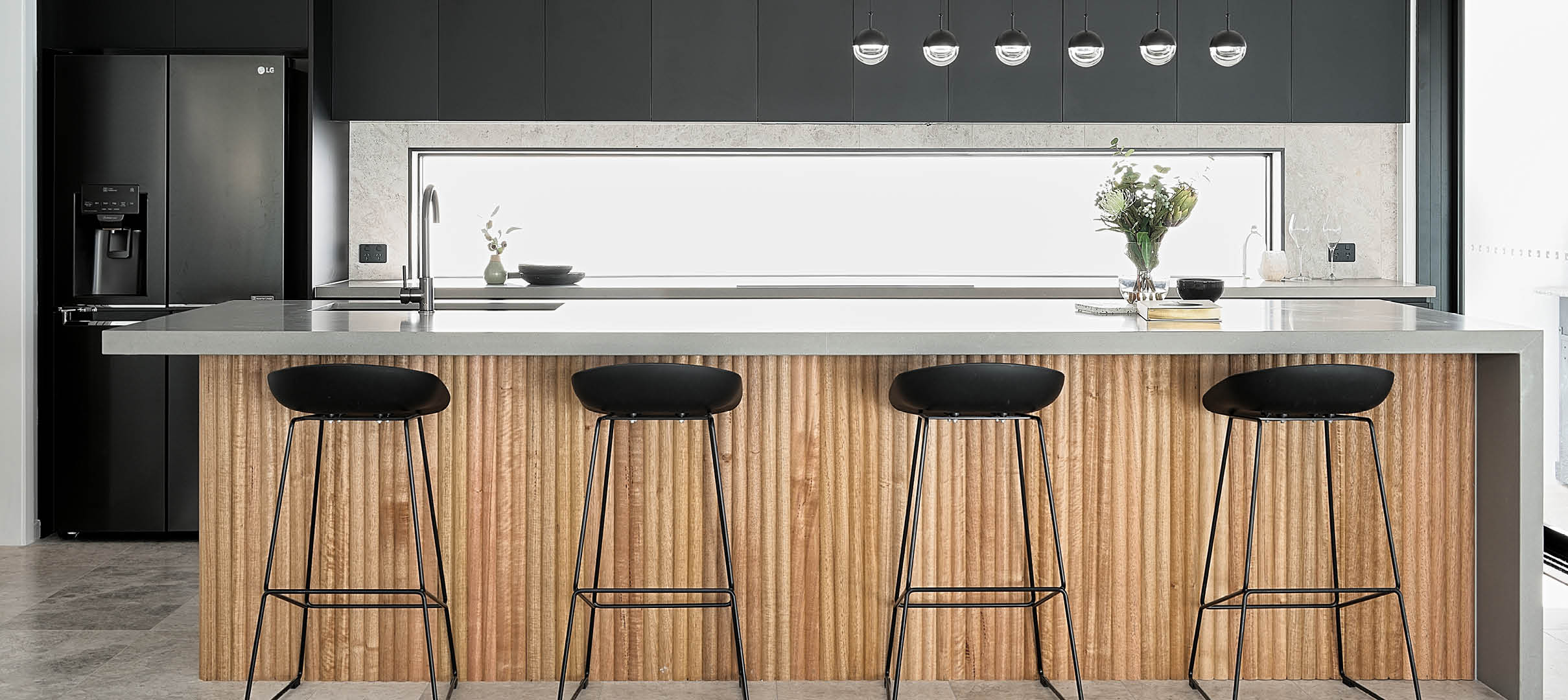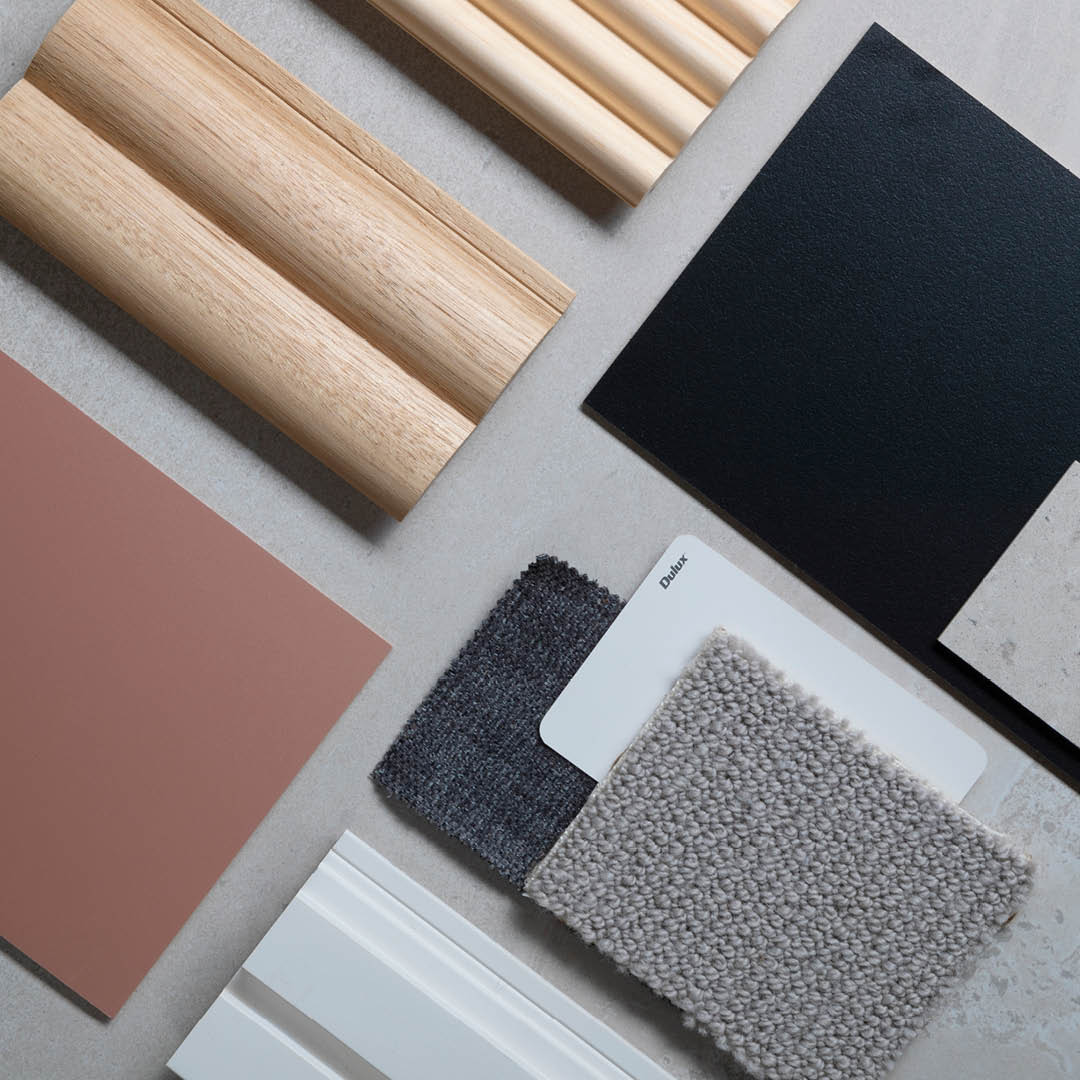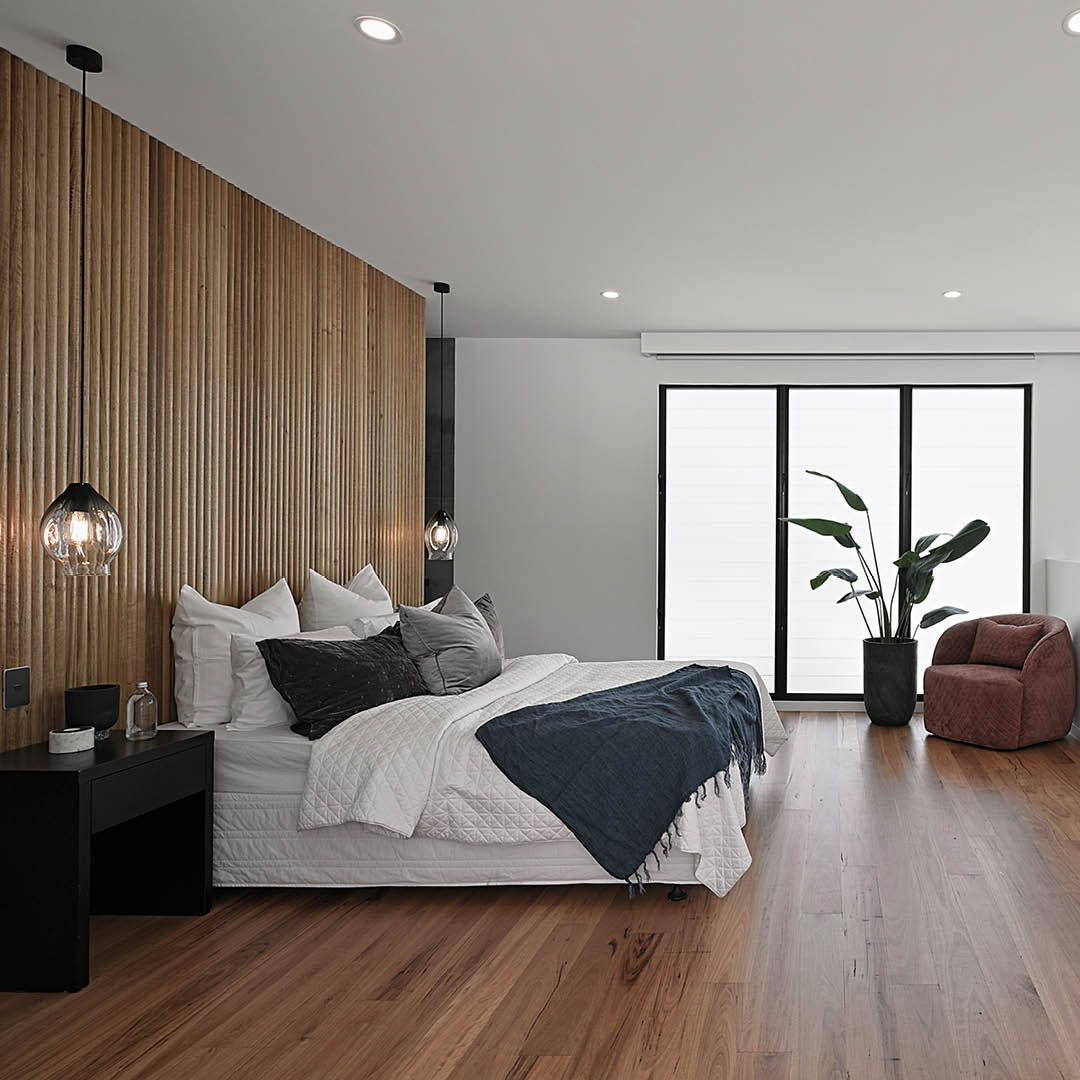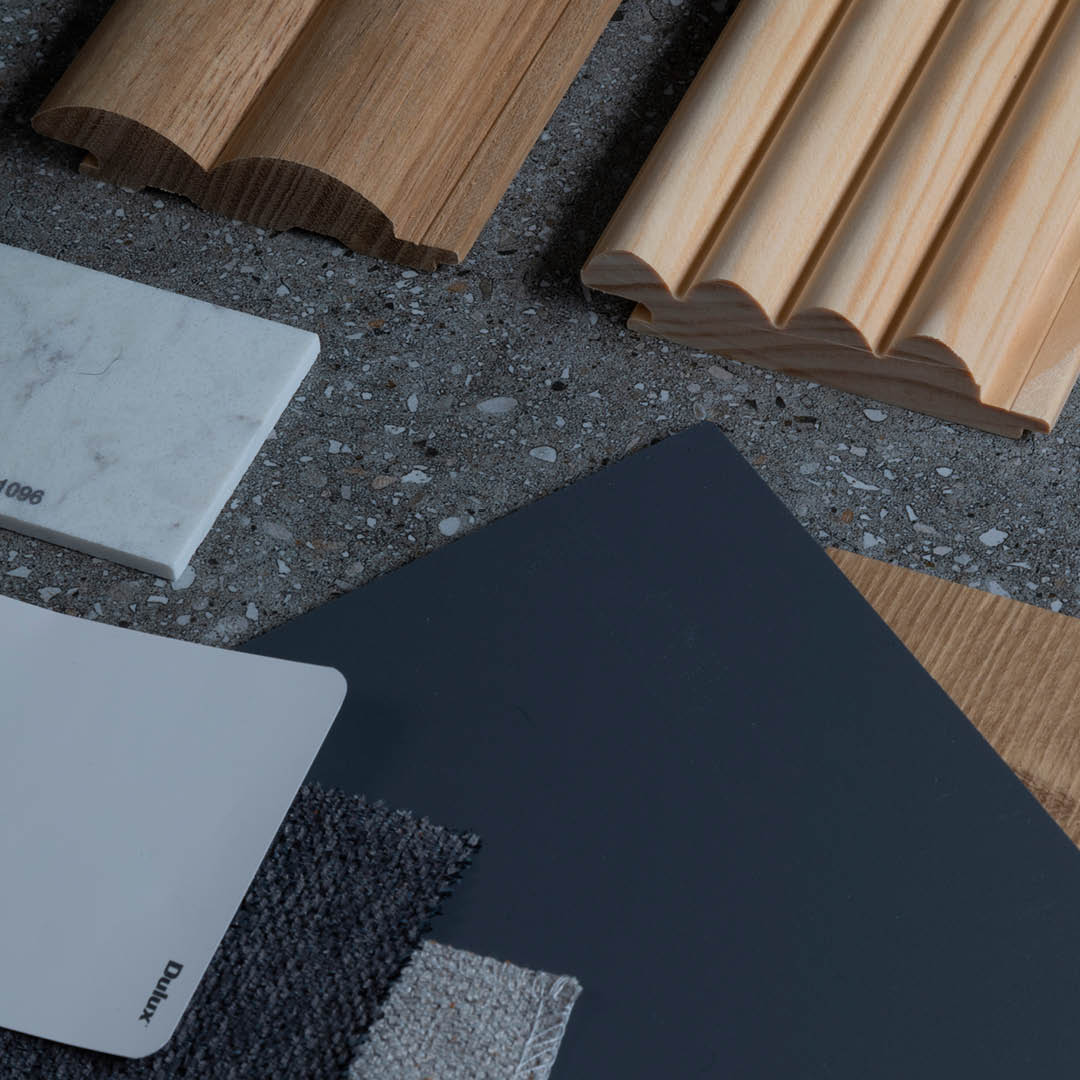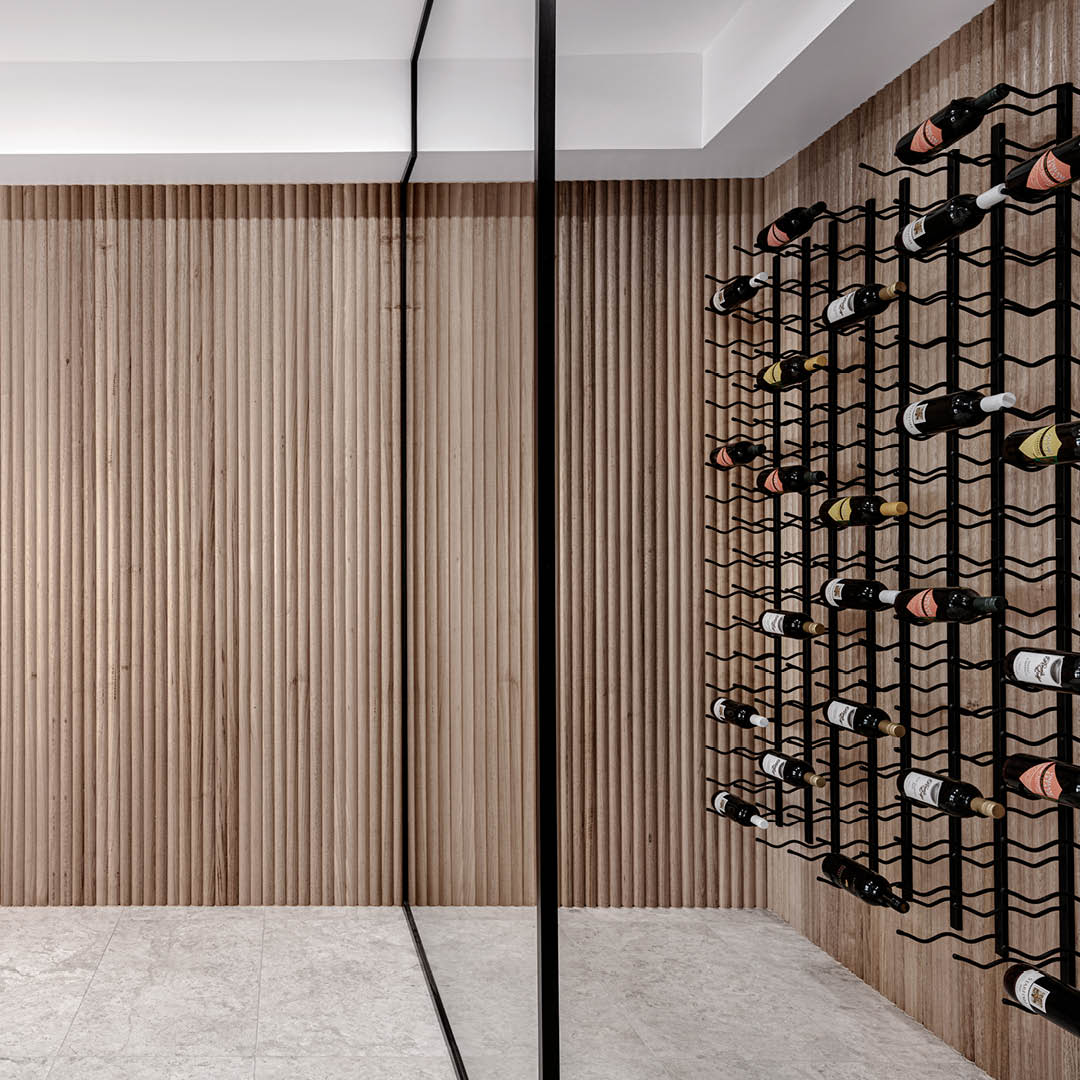It can be difficult to visualise how you would like your space to look when building, renovating, or redecorating. So how can you ensure that you get the design style right before you even start?
The secret is a mood board.
What is a mood board?
A mood board helps you visualise a collection of ideas for a room, space or project that inspire you. It can be developed electronically or physically with samples, swatches, finishes, textures, colours, etc., and/or images of these items.
A mood board helps you:
- See how different ideas work together before making a financial commitment.
- Focus your ideas into what works for you.
- Consider the constraints of your room or space.
A mood board can be as simple or as detailed as you like.
How do you create a mood board?
- Select the format that works for you
Determine whether you would like to create your mood board electronically or with physical representations.
- To create an electronic mood board, you might like to use online tools such as Canva, Style Sourcebook, or Pinterest. Once you have determined your preferred mood board app, start adding ideas to your board.
- To create a physical mood board, collect samples or swatches of flooring, paint, fabric, finishes etc. You can also include cut outs from magazines or photos – this is especially handy for larger items like furniture. Click here to order samples from Porta.
- Gather inspiration for your space
Gather interior design and styling inspiration for your space from online platforms such as Pinterest, Instagram, blogs, and the websites of house and garden magazines. Supplier websites, including Porta’s website, can also contain a wealth of inspiration.
You can also gather inspiration from magazines, catalogues, inside physical stores and from physical samples or swatches.
Handy Tip
As you add new ideas, ensure you reference any constraints that cannot be changed, such as paint colour, furniture, flooring, window furnishings or room layout.
- Curate your ideas
Keep adding ideas to your mood board to help you identify the overall style or feel that you would like to use in your space – you may notice a consistent theme emerging. Refine your mood board as you go, removing the images or items that don’t reflect your overall style for the space and determine what is or isn’t working.
Handy Tip
If something isn’t working, try:
- Balancing pops of colour with neutrals.
- Adding interest with natural materials such as timber and stone.
- Adding dimension with textures such as decorative wall linings and fabric.
- Refining the number of colours or patterns.
- Ensuring the board is harmonious.
It is important to note that it can take time (sometimes days, weeks, or months) to develop and refine your mood board.
- Bring your mood board to life
Once you are happy with your mood board, collect physical samples (if you haven’t already) and smaller items that will be used in the space, such as cushions, throws, homewares, taps, etc. See how these items will look in the space, particularly during different times throughout the day and night.
If you’re unsure about any of the selections, go back to your mood board and refine further.
Handy Tip
It can help to scale the items in your mood board to reflect how they will look in the finished space. For example, a large flooring sample with smaller window furnishing or furniture fabric swatches.
Featured Project:
Product: Porta Contours, Riverine, in Tasmanian Oak
Development & Construction: Bright Black Developments
Photography: Brock Beazley

